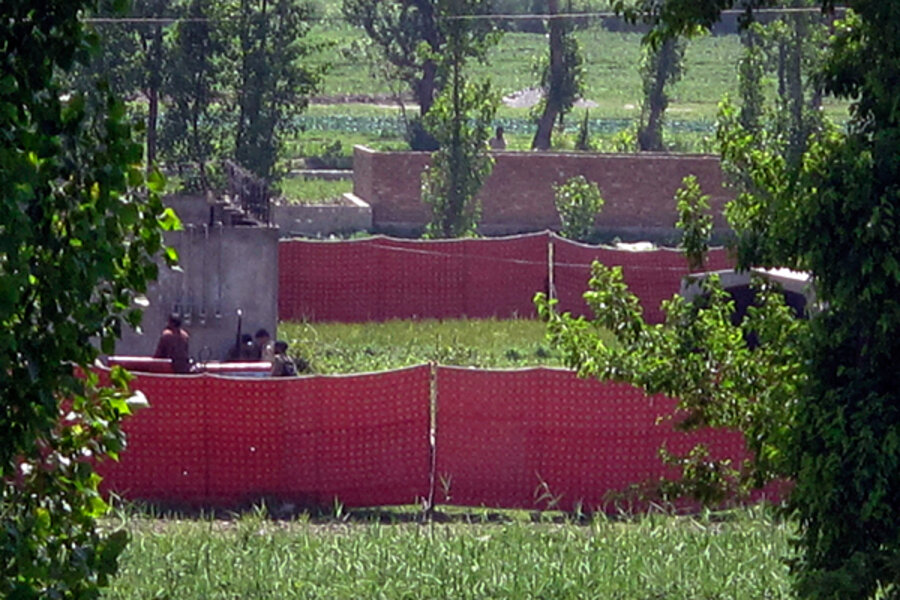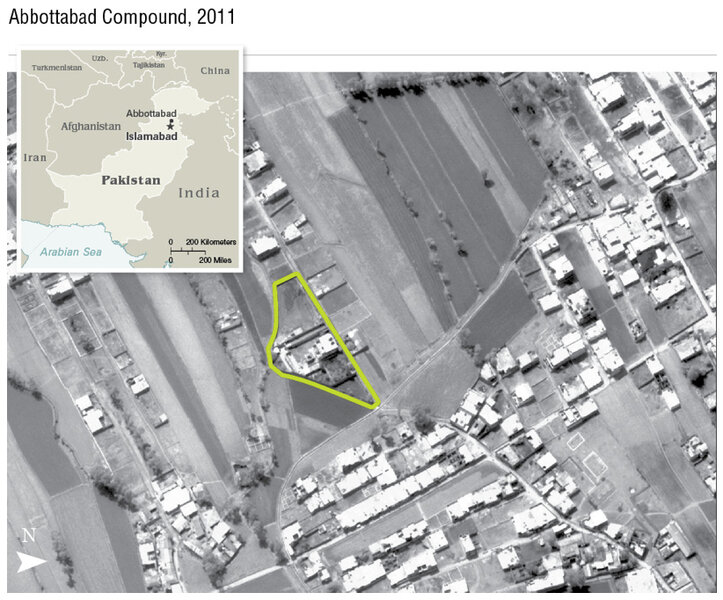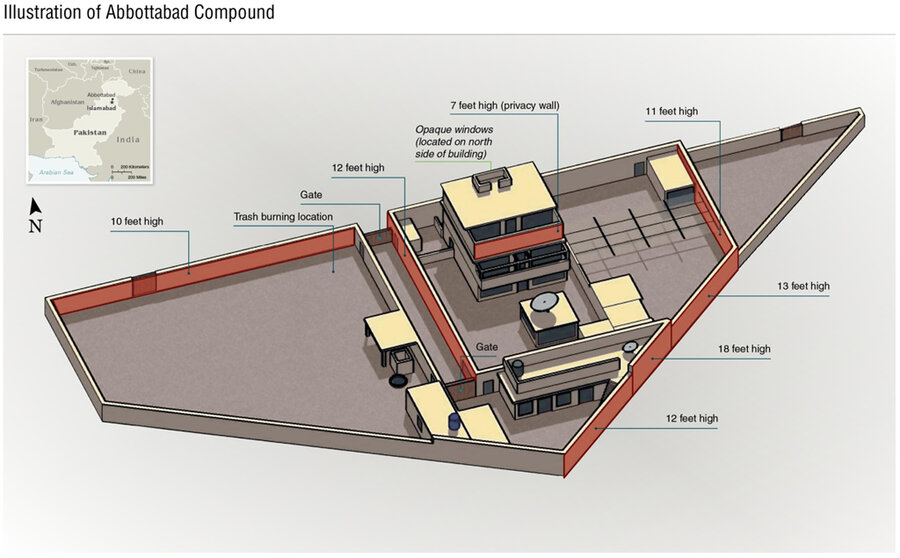Bin Laden bodyguard's satellite phone calls helped lead US forces to hiding place
Loading...
| Karachi, Pakistan
Satellite phone calls that Osama bin Laden’s bodyguard made from July to August last year are believed to have helped US forces hunt down the Al Qaeda leader in the Pakistani compound where he was killed early Monday, according to local Pakistani intelligence sources.
US intelligence agencies tracked the Kuwaiti bodyguard's calls from the compound to Al Qaeda associates in the cities of Kohat and Charsada in Khyber Pakhtunkhwa Province, a narrative that was corroborated by several sources.
Their names and titles could not be disclosed because of sensitivities surrounding the operation, including whether the Pakistani government had any knowledge of it. The Pakistani government has not taken any clear stance as yet on the operation. The sources' information has provided the Monitor new details of the intelligence process that led to bin Laden's capture.
IN PICTURES: Global reaction to Osama bin Laden's death
It is widely reported that the detained 9/11 mastermind Khalid Sheikh Mohammed gave his US interrogators the pseudonym of a man he described as Osama bin Laden’s most trusted courier, whose whereabouts were tracked last fall to a fortress-like compound in Abbottabad city, some 75 miles north of the capital Islamabad. But US intelligence was also monitoring the satellite calls made by bin Laden's bodyguard, which also helped lead US forces to bin Laden's hiding place.
Bin Laden avoided e-mail and phones for fear those lines could be tracked, and instead relied on a system of personal couriers who carried his messages to the outside world. His compound lacked any telephone or Internet connection, according to local sources, but he did have at least one satellite phone. Further backing their story, a Reuters reporter visiting the scene reportedly saw a satellite dish in the compound.
The sources say that early Monday at about 1 a.m, the US Apache helicopters carried out the operation on a three-storey building inside the compound, which was surrounded by 10- to 15-ft.-high boundary walls with barbed wire and CCTV cameras. It was built by a Pashtun-speaking Afghan or tribesman from Waziristan in 2005, according to locals.
Despite attempts to capture bin Laden alive, an exchange of intense fire during the raid killed him and injured his wife when he put up resistance. His wife was left behind when US forces retreated – apparently because one of the helicopters crashed during the operation.
Bin Laden's daughter apparently saw the US troops dragging the dead body of her father, the sources say. Sources say the US forces took away another man but they are not aware whether he was injured or dead. At least three men were killed in the operation while two women were taken into custody.
The injured were taken to the Combined Military Hospital in Abbottabad for treatment and sources say after the treatment they were taken to an unknown destination.
Bin Laden was previously believed hiding in northern Pakistan's Chitral Province or in Afghanistan's Nuristan Province. Bin Laden was also long believed to have 30 to 40 bodyguards, but US forces did not encounter such a large number of guards during the operation, which was over in less than 40 minutes.
Today, a heavy presence of Pakistani troops and security officials remained in and around the compound. Army troops and policemen have cordoned off the neighborhood, Bilal Town, and sealed the entry and exit points leading to the compound.







